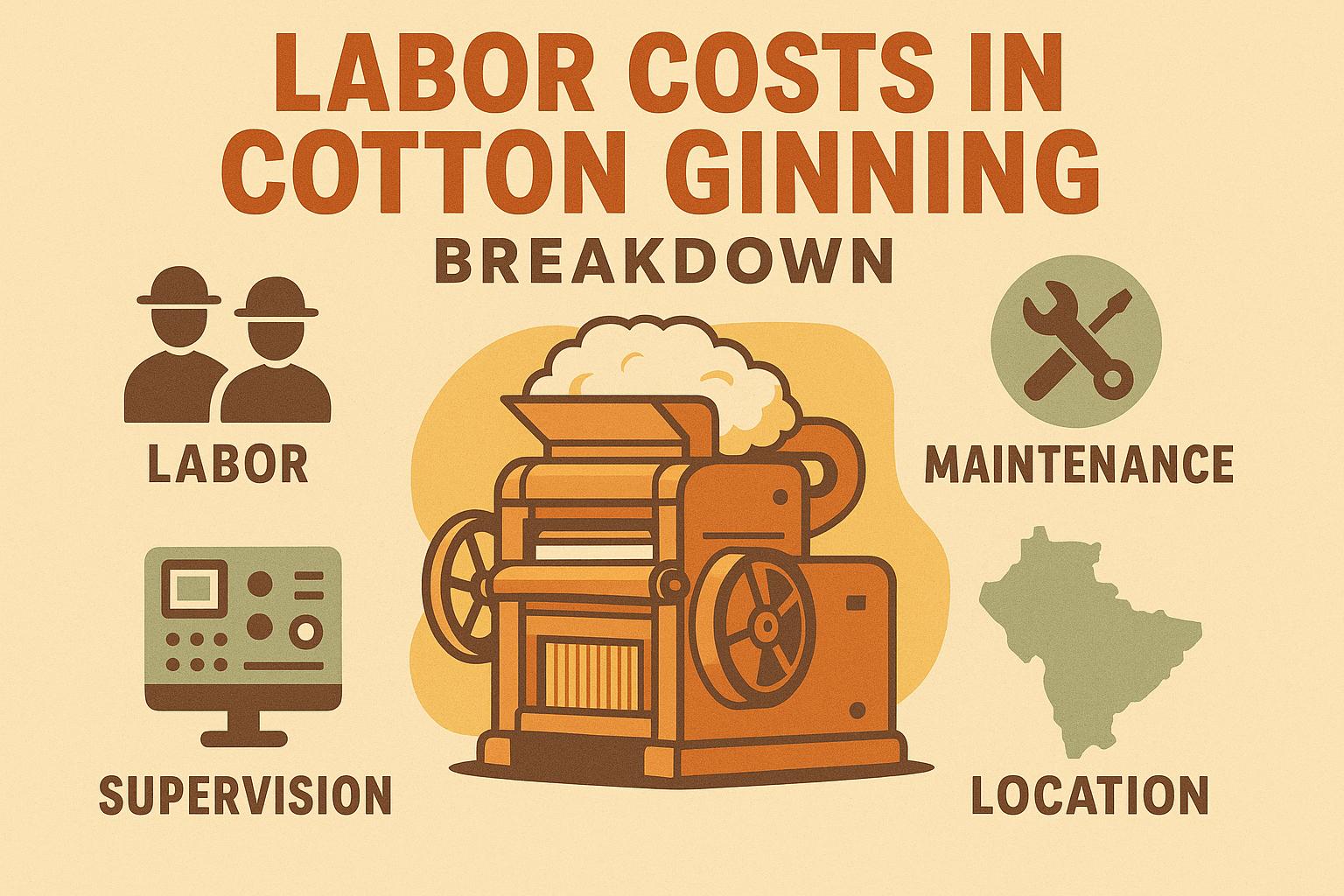Executive summary (TL;DR)
- Use this cotton harvest preparation checklist to time defoliation at 60% open bolls and check equipment calibration—boosts efficiency 15-20% and reduces trash for premium grading.
- Test soil moisture pre-harvest at 10-12% for clean picking; integrate module covers to cut weathering loss by 10%, ensuring lint quality holds through storage.
- Scout for regrowth weekly; apply ethephon mixes for even drop—saves 10% on labor and positions for market timing with 5-10 cent/lb gains on early sales.
Related Post: For end-season strategies, check out our post on Harvest Management Strategies for Cotton Farming: Maximizing Yield and Quality.
I've prepped enough cotton harvests to know that the weeks before pickers roll aren't downtime—they're the make-or-break for turning a solid crop into top-dollar bales. You miss a defol timing or ignore equipment tweaks, and suddenly you're dealing with trash discounts or weather losses that eat your margins. For growers with years of timing the sky and soil, a solid cotton harvest preparation checklist means systematic steps that minimize risks, maximize quality, and keep your operation efficient without last-minute scrambles.
We're outlining a practical list here, assuming you've got your boll open rates and DD60s basics solid. This is about the pre-harvest actions that pay off, backed by extension data from Texas A&M, Mississippi State, and Cotton Incorporated. I'll pull from those trials, share field-tested refinements, and give you the checklist to adapt for your ground. No overkill, just the prep that delivers cleaner picks and better payouts.
Why Thorough Preparation Sets Your Harvest Apart
Harvest prep isn't glamour—it's the grind that protects your investment. Poor timing sheds bolls or invites rot, costing 100-200 lbs/acre, per NC State studies. Solid prep? Cuts downtime 20%, boosts grade for 2-5 cents/lb premiums, Cotton Council data shows.
For your scale: In 500 acres, that's $5K-10K saved on efficiency alone. Key: Start 4-6 weeks pre, syncing with maturity.
Off-topic: Tie to market—clean lint from good prep fetches better basis; use futures apps to lock when prep signals early finish.
Timing and Maturity Assessment: Nail the Start
Get this wrong, and your whole harvest drags. Monitor cutout (NAWF=5), accumulate 850 DD60 post-bloom for open bolls.
Steps:
- Count open bolls weekly: Aim 60% for defol go.
- Heat units app: Forecast 200 DD60 post-cutout for planning.
- Variety match: Early-maturity first if mixed.
Arkansas extension: Timing at 60% cuts regrowth 15%, clean pick.
Pro tip: GPS map mature zones; harvest hot spots first to beat the weather.
Defoliation and Desiccation: Clean Drop Essentials
Defol sets the tone for pick quality—poor drop clogs machines, adds trash.
Checklist:
- Mix ethephon (1.5 pt) + TDZ (0.1 lb) for warm; tribufos (1 pt) cool.
- Rate adjust: 10-15 GPA, flat fans for coverage.
- Weather watch: Apply dry, 70-85°F for an 85% drop in 7 days.
Georgia trials: Proper mix holds mike 0.2 points, adding cents/lb.
Note: Test strip first; adjust for rank growth.
Equipment Readiness: Avoid Breakdown Bottlenecks
Machines fail when needed most—prep cuts downtime 25%, Oklahoma State.
Prep list:
- Calibrate pickers: Spindle sharpness, doffer alignment.
- Clean/lube: Blow dust daily pre; change filters/oils off-season.
- Test run: Full load check for vibrations/leaks.
Manufacturer data: Calibrated units reduce trash 10-15%, up grade.
Pro tip: Vibration sensors spot issues early—$200 tool saves $2K repairs.
Field and Soil Conditions: Groundwork for Smooth Ops
Wet fields bog machines, dry crack bolls—prep ensures traction.
Actions:
- Soil moisture test: 10-12% ideal; delay if wet to avoid compaction.
- Weed cleanup: Spot spray escapes; clear rows for access.
- Residue management: Shred if heavy to prevent clogs.
Mississippi data: Dry harvest reduces bark 20%, boosting color grade.
Storage and Module Prep: Protect Post-Pick Value
Harvest ends at module—poor cover weathers lint, dropping 2-3 cents/lb.
Steps:
- Tarps ready: Waterproof, secure for 10-12% moisture bales.
- Site select: Elevated, drained pads; space modules 3 ft.
- Label/ID: Track varieties for classing/segregation.
Cotton Council: Proper modules cut loss 5-10%, preserving strength.
Labor and Safety: Team for Efficiency
Crew mishaps delay—prep keeps safe, swift.
Checklist:
- Train on machines: Safety protocols, operation.
- Schedule shifts: Avoid fatigue in long days.
- PPE stock: Gloves, masks for dust.
USDA: Trained teams cut accidents 30%, up productivity 15%.
Off-topic: Business tool—use apps for shift logs; ties to insurance discounts.
Weather Monitoring and Contingency: Plan for the Unexpected
Forecasts shift—prep buffers risks.
Actions:
- App alerts: Rain probability; prioritize mature fields.
- Backup gear: Spare parts on-site.
- Insurance review: Coverage for delays.
Texas AgriLife: Weather-prepped harvests reduce loss 10-20%.
Quality Sampling: Pre-Class Insights
Sample modules early for mike/strength clues.
Method: Pull from 10 spots/module; test portable for trends.
Benefit: Adjust marketing—high-quality forward premium.
Economics: Good prep saves $50-100/acre downtime/quality; ROI 3:1.
Common Oversights: Crusting, Clogs, Delays
Ignore moisture? Mud clogs. Skip calibration? Trash spikes. Weather blind? Rot sets.
Fix: Weekly checks, contingency stocks.
A Southeast grower prepped rigorously, harvesting 20% faster, pays every season.
Actionable Takeaways
- Time defol at 60% open; mix ethephon/TDZ for drop.
- Calibrate equipment; clean/lube pre-season.
- Test moisture 10-12%; site modules elevated.
- Monitor weather apps; train crew for safety.


